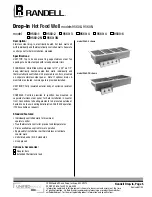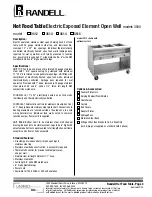
Care of your iQ Bottle and Baby Food Warmer
Always unplug the warmer and allow it to cool before cleaning. Wipe the inside and outside of
the warmer with a damp cloth. DO NOT USE AN ABRASIVE CLEANER. Using cool pre-boiled
or filtered water in your warmer may reduce limescale build-up. When the warmer needs
de-scaling, the mode and starting temperature symbols will flash on the electronic display. To
ensure maximum effectiveness, you should de-scale your warmer every time it is required.
To acknowledge the de-scale warning, press and hold the Power/Mode Selection or Volume
Selection/Start Button for 3 seconds. If you do not wish to de-scale, please be aware that the unit
will not remind you to de-scale on your next use, but will instead begin re-counting cycles until the
next de-scaling is needed.
IMPORTANT! DE-SCALING
Under no circumstances should anything other than citric acid or vinegar be used as it may
cause irreparable damage. Avoid contact with eyes as this may cause irritation. Keep out of the
reach of children.
EITHER:
Mix one pack of citric acid (10g) with 7oz/210ml of water. Pour solution into the empty warmer.
DO NOT place a bottle, jar or cup into the warmer when de-scaling. Close the lid of the
warmer and set the warmer to run with 11oz/325ml of milk from frozen. After the warming
cycle has ended, leave the solution to cool for 30 minutes before emptying the warmer and
rinsing with tap water. Wipe the inside and outside of the warmer with a damp cloth only.
OR:
Pour 3.5oz/100ml of vinegar mixed with 7oz/210ml of cold water into the warmer. Allow
liquid to stand in the unit until any limescale has dissolved. DO NOT place a bottle, jar or cup
into the warmer when de-scaling. DO NOT start the warming cycle. Empty the unit and rinse
thoroughly. Wipe the inside and outside of the warmer with a damp cloth only.
Key to Product Label
TYPE B APPLIED PART
FOLLOW OPERATING
INSTRUCTIONS
ONLY USE INDOORS
CLASS II E
Q
UIPMENT
GENERAL WARNING
EUROPEAN STANDARD
DISPOSE OF THROUGH
SEPARATE COLLECTION
ROUTE FOR WASTE
ELECTRICAL E
Q
UIPMENT









































